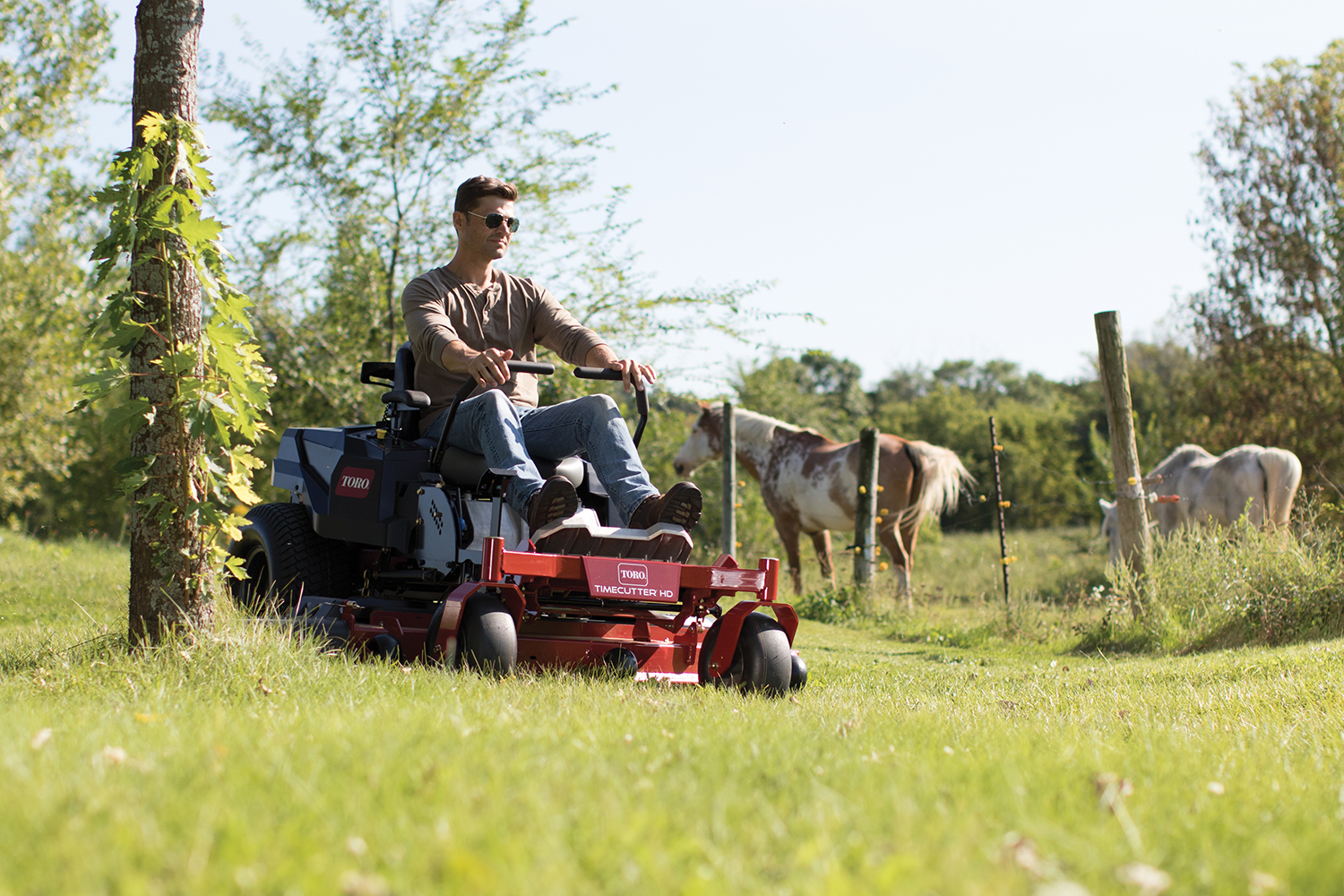
Maintenance Frequency
Regular maintenance is the most important step for achieving the best performance and longest life out of your riding mower. If equipped, use the hour meter to track and perform routine services, such as oil changes and spark-plug replacements. If not equipped with an hour meter, one way to track time used is to put a piece of masking tape on the product and make a pencil mark each time you mow; knowing how long it takes you to mow times the number of marks eliminates the need to guess your number of service hours.
Remove the Deck According to Manual
Remove a deck per your manual’s instructions to change blades, inspect and replace drive belts, or clean the underside of your mowing deck.
Removing and Sharpening the Blades
To remove blades, block with scrap wood, and use a socket wrench to remove the blade fastener. Have blades sharpened and balanced by a professional if you do not have a blade balancer.
Replace Worn Mower Drive Belts
Follow the operator’s manual to remove and replace a worn mower drive belt. This may involve removing the mower deck. Generally, mower deck belts are relatively easy to replace. Be especially careful to replace and correctly position any belt guides or brackets moved during the process.
Change Oil
Change oil, as recommended, when the engine is warm. Many riding mowers come equipped with an easy-to-open push-pull drain plug and plastic hose. If the engine has an oil filter, apply some oil onto the rubber sealing gasket before installation. If the filter installs open end “up”, you can also pre-fill it with oil.
Use a funnel or oil spout when you add new oil. Be sure not to overfill. Check the gauge on the dipstick periodically, as you fill. If the engine has an oil filter and it was changed, you should re-check the oil level after running the engine, as the filter will retain some oil.
Check Battery
If the battery has removable caps, check the water (electrolyte) level periodically, and add distilled water as needed. Clean corroded battery terminals with a wire brush to ensure optimal starting power and proper operation of the engine charging system. Disconnect the negative cable FIRST and reconnect it LAST to prevent accidental shorts.
Apply dielectric grease to the terminals after re-attaching the battery cables.
Check Air Filter
Check air filters, often, especially when operating in dusty conditions or if the mower is throwing out a lot of dry chaff. Tap the filter on a hard surface to remove loose debris, and replace the filter when it is no longer effective.
Use Gas Less Than 30 Days Old
Do not use stale fuel (fuel more than three weeks old). Drain the stale fuel into a fuel can and add it to your car’s fuel tank to safely dispose of it (the small amount will cause no harm). To drain, shut off the valve in the fuel line, loosen the hose clamp, and remove the hose. Put one end in the can and reopen the valve.
